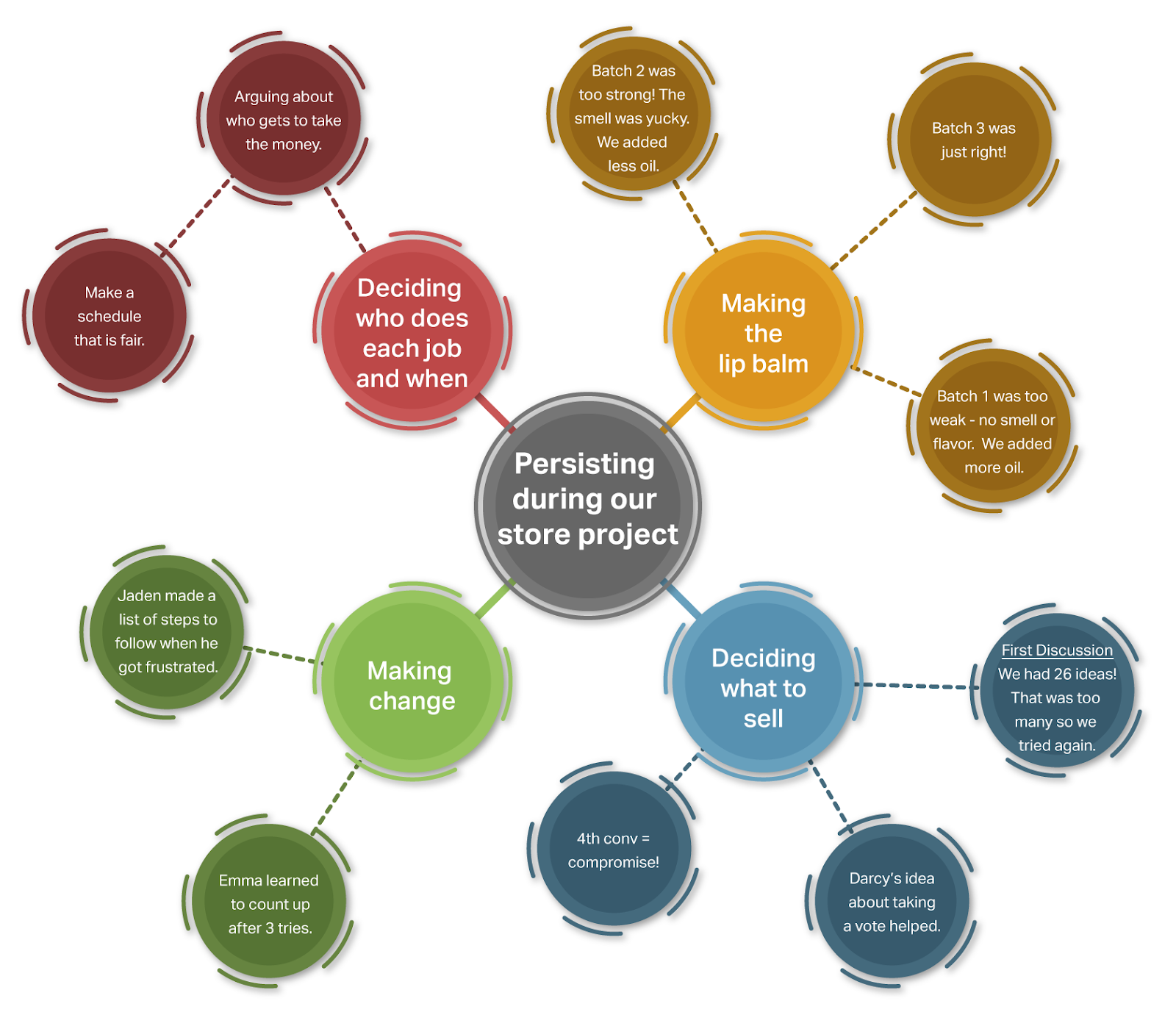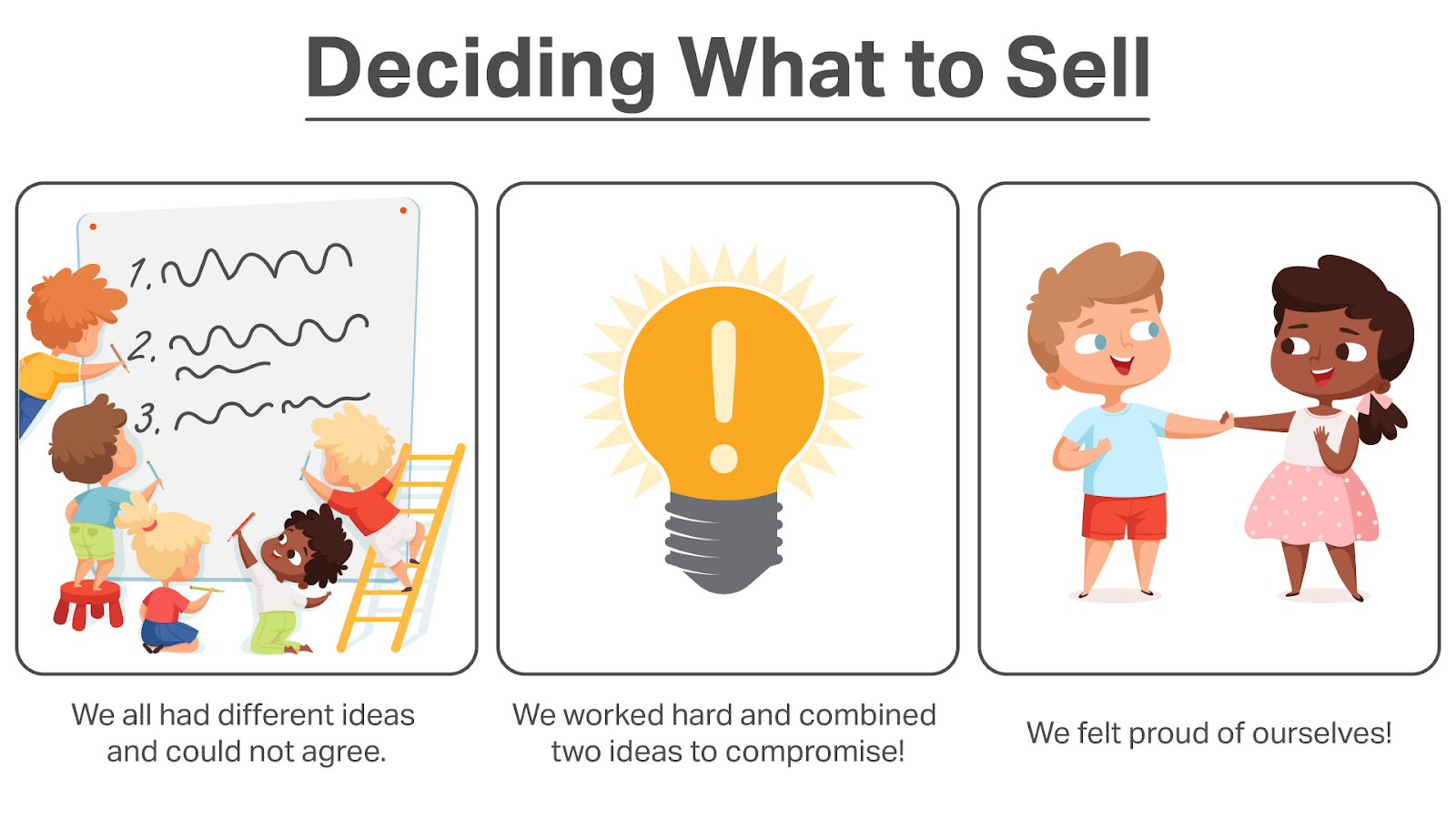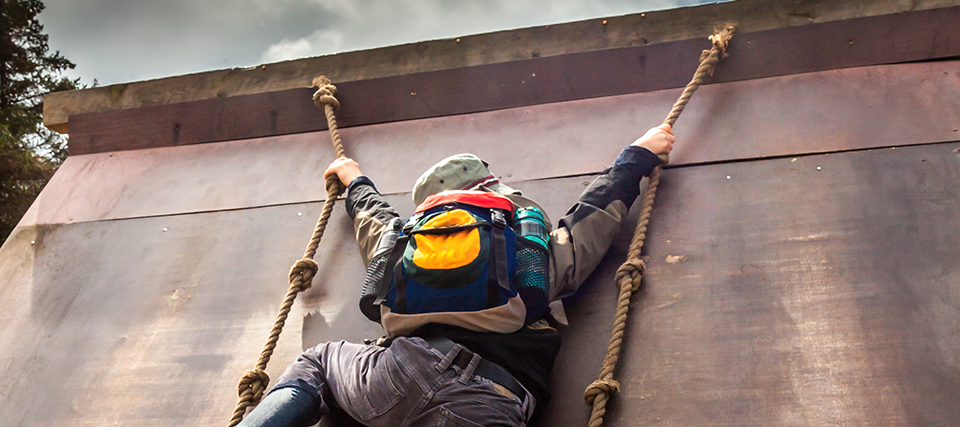Documenting Persistence
As educators, we have fortunately reached the point where we can all agree that persistence is a key habit of mind that is necessary for students’ success in both school and life. I hope we can also all agree that persisting can be taught and learned, and that it should be one of our highest priorities as educators. Documenting persistence is an essential way to reinforce the practice of this habit of mind with your students, while emphasizing it as a shared value in your classroom and school.
A particular project I did with my second graders comes to mind when I think about persistence. My students were super excited about the idea of having their own classroom store. It was November, so I thought this could be a great opportunity to raise some money for charity. The students could make something they could sell, practice charitable giving, and engage in some hands-on math in the process. As it turned out, a great deal of persistence was needed on both my part and theirs to make this project successful.
From the beginning of the project, my students could not agree on anything. From what they would make, to the name of the store, to who would do what role and when. Every discussion was contentious and time consuming. The math turned out to be the easy part – the social and emotional learning was much more challenging.
At the time, I chose to document the academic and charitable giving parts of the project. But I could have chosen to document through the lens of persistence, which would have been a very meaningful learning experience for this particular group of students.
In my second graders’ store project, compromising was their biggest challenge. The process of deciding what to sell involved not one (as I had planned), but four long conversations to arrive at a solution. They all had wildly varied ideas about what we could make to sell. I had to help them work through the feasibility of their ideas on the way to compromise. No, we can’t make stuffed animals because of time. No, we can’t make a new batch of cupcakes every day because we will make the lunch volunteers insane, and no, we aren’t going to get a new video game launched in three weeks.
Students who are persisting can see alternative routes to solving problems. For my students, coming to this particular compromise required a whole map of alternative routes. I could have taken a moment to document each of their alternate solutions in a deliberate way – the pros and cons, the final decision, and the reasoning behind it. I could have hung them on the wall for them to examine and discuss, reinforcing for them, and any visitors to our room, how important persistence was in coming to consensus as a group.
Documentation is an incredibly powerful tool for building our students’ ability to persist in our classrooms. When we engage in the practice of documenting persistence, we are showing our students that we value the process of iteration, and the journey of learning over perfection. It destigmatizes the making of mistakes, allowing students to discuss setbacks objectively and without judgement. It also normalizes for students the idea that everyone learns at their own pace, and a little differently.
When students can see their classmates’ learning trajectories and engage in discussions about them in a matter-of-fact way, they are well on their way to building persistence. Additionally, students can use the documentation as an opportunity to support each other as well, building community in your classroom. My kids’ store project would have been an excellent opportunity for using documentation of persistence for building community. In the end, by the way, they compromised by deciding to make lip balm and holiday cards. We raised several hundred dollars to donate to a local children’s charity, selling to students, teachers, and parents in the mornings before school. The store was a hit – even if we did leave a trail of glitter and coconut oil throughout the school in the process!
Documenting the process of learning a math strategy or essay writing is fairly straightforward, but what about documenting a habit of mind such as persistence? To do so, you must find ways of documenting a process occurring over time. First, you need to find ways of drawing students’ attention to the times when they are persisting. You can help students to notice how they feel when they are persisting, as well as how they feel when their persistence pays off. Also, the best documentation should provoke discussion among students about persisting and how it relates to their learning.
I shared one idea along these lines recently in the VEX Community. Here are a few other ideas you can use as jumping off points for documenting persistence in your own classroom:
- For younger students create a “looks like”, “feels like”, “sounds like” display around the idea of persisting. Have students contribute and add specific examples to each section from their own learning over the course of several weeks. Take time to discuss them with students (morning meetings and closing circles are great places to have these conversations!)
- Create a class concept map about what persisting is, and then have students create ongoing individual concept maps about their persistence and its effects. Be sure to make time for students to share and discuss them with each other. Revisit these concept maps throughout the year, especially after you have seen growth or persistence in a particular project. By revisiting, students can refine their ideas and reflect on their learning processes as well as products. In my store project, making a concept map of the “deciding what to sell” part of the project would have been a fantastic way to reflect on persisting, as well as how to come to consensus in a group.

- Have students make traditional or digital storyboards documenting various strategies they use for a complex problem solving activity. In the store project, I could have assigned groups of students to create storyboards documenting the persistence needed in different aspects of the project – decision making, learning to create the lip balm, collecting money and making change, etc.
- Students can create timelines of project work that show moments of persistence – each point on the timeline can be a place where students had to try a different strategy as they worked to solve problems.
- Have students create a “Persistence Portfolio” throughout the course of a semester or year that they can share with other students or their parents. We could have made a class Persistence Portfolio for the store project, and documented the persistence students showed in deciding what to make, how much to charge, and what to call the store. Not to mention the persistence they showed in learning to make the lip balm, cleaning up their messes, and at least a dozen more things!

- Involve students in choosing an image as the class symbol for persistence, such as a mountain. Make several copies of the image with space for writing inside included. Create a bulletin board or display where students can take a moment to pause when they notice themselves persisting, and document how they overcame an obstacle. Students might enjoy creating a persistence mascot (I’m thinking superhero here) along these same lines.
- Create documentation of your own persistence along with your students and share it with them periodically, or as part of an existing bulletin board or display. If I had documented the places during the store project where I had to use persistence for my students to see, it would have been a wonderful way to engage them in a discussion about persistence from a different point of view, as well as empathy!
When documenting persistence, it is important to keep it a living document, so that it doesn’t just become a stagnant part of your classroom environment, or “a persistence thing we did once” to your students. In order for them to form a habit, they must continue to practice, reflect, and engage with the habit of mind in an ongoing way. One way to do this, is to involve families in the development of persistence, and use your documentation as a conversation starter during parent-teacher conferences.
You can also assign ongoing persistence documentation as homework occasionally, as another way of getting the conversation going with parents. This can help parents understand why persisting is important, how their students are making sense of the concept of persistence, and how they can help reinforce it at home. Encourage parents to share their own persistence stories with their students. I’m imagining a class persistence project where students interview their parents about ways they have had to persist in their own lives, and create artifacts to share at school. These school/home connections can help parents and students reflect together about how persistence is not just something that is useful at school, but it is a skill they will use for their entire lives.
Consider ways to involve other classes and grade levels in your school in documenting persistence, as well. If you have a hallway bulletin board you can use, invite students from other classes to contribute their own experiences. Invite other classes to join you when students are sharing persistence portfolios or concept maps, or challenge the class next door to document a certain number of examples of persisting by a certain date. Getting the rest of your school involved in an ongoing conversation about persistence can help to ensure that students can continue to develop this habit as they move up through the grades.
The choices we make about what and how we document students’ learning are extremely powerful, and we can use documentation not just as a way of showing off finished products, but as a tool for helping students to develop the habits of mind that can provide lifelong benefits. Documenting persistence in the classroom sends a powerful message to your students: Learning takes time and practice. It isn’t a straight line, but is often a winding path with many mistakes and setbacks; and that everyone’s journey on that path is different.
Aimee DeFoe is a Senior Education Developer at VEX Robotics.
Like this article? Discuss it in the VEX Professional Learning Community.
